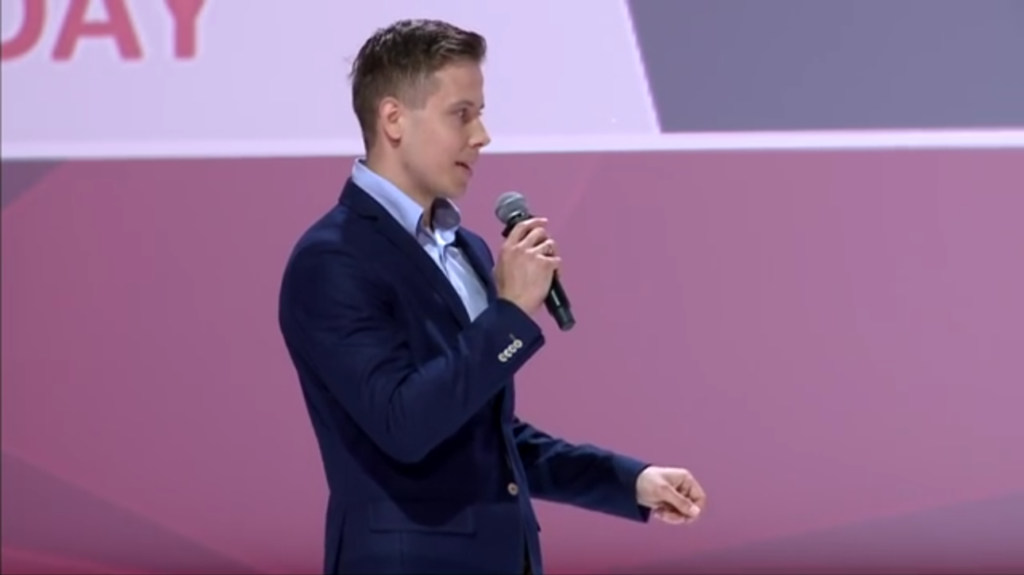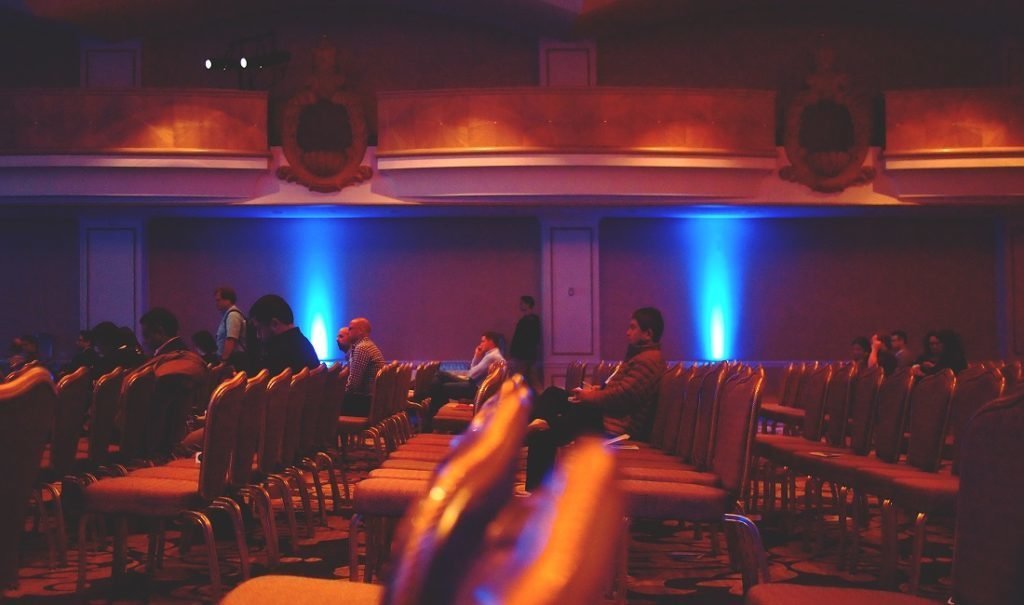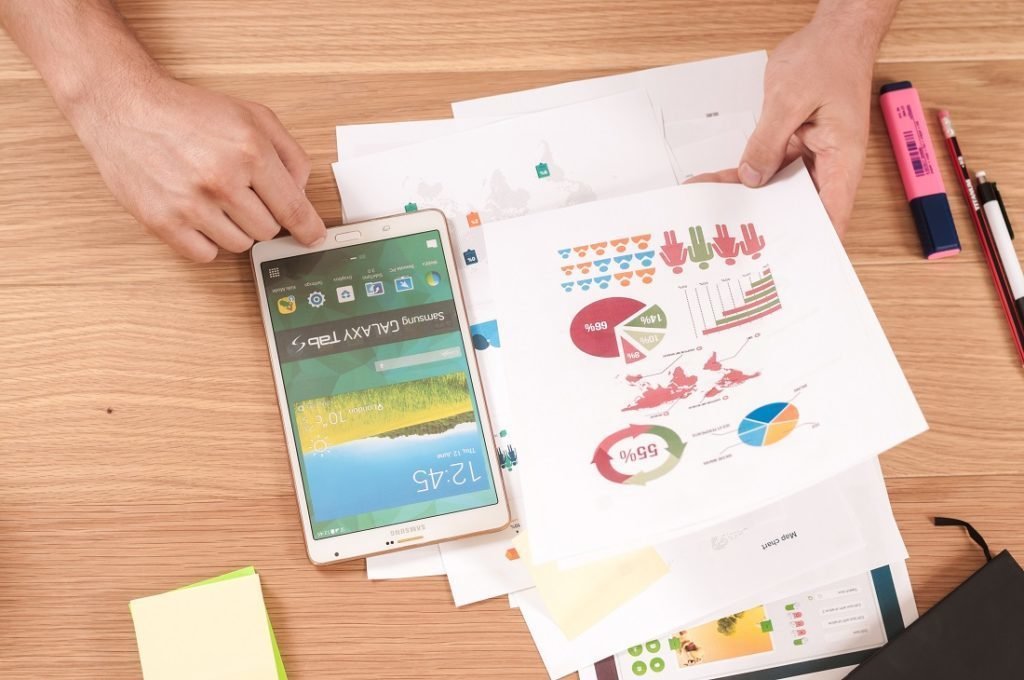
How to prepare a good pitch?
A work on your company can last for years, but to present your idea in front of an audience or investors you’ll sometimes have only… 2 minutes.
This is what pitch is all about – a short presentation during which you should be able to present plainly what you create and why anybody should be interested in it. Such presentations usually last from 2 to 10 minutes. Why such a short time? Because of several reasons:
- During such presentations lots of teams appear – in order not to bore the audience, each team shouldn’t present for too long.
- A short presentation time makes you get down to the nitty-gritty. Describing their products, people tend to list all the pros for a very long time. You should be able to describe your product in 2 sentences maximum. And you should be able to tell about all the details in 250 words maximum.
Take a look at my exemplary pitch at the ABSL Startup Challenge during which I was describing one of the startups I am involved in (Grinfy tool for saving energy in computers – my presentation starts at 4:40).
Our mind works in two systems. The first one works in a fast and automatic way, without effort or with little effort. We also have no sense of a conscious control. The second system needs more energy. This is thinking which requires effort. It involves concentration and conscious action.
Daniel Kahneman writes about these two systems in his book „Thinking, Fast and Slow”. He gave a few examples of fast actions, typical for the first system:
- Noticing that one thing is placed further than the other one
- Turning your head towards the source of sudden sound
- Reading words on huge advertisements
- Understanding simple sentences
- Sensing hostility in someone’s voice
In turn, the activities from the second system require paying attention:
- Listening to the words of a particular person in a loud crowd
- Looking out for a grey-haired woman
- Watching one’s behaviour when out
- General comparison of pros and cons of two washing machines
- Examining the properness of a complex logical expression
If we were to work in the second system all the time, so deeply analyze everything happening around us, deeply reflect on every decision, consider all the possibilities, we wouldn’t be able to function. So much happens every single second that we need to have particular fixed mechanisms which allow us to ignore some information and to make decisions quickly.
It is connected with the fact that our daily choices are not often fair. Imagine that you see an elegant man in an expensive suit getting out of a luxurious car. What would you think about his house? You won’t probably think that he lives in a modest, 100-year-old cottage with a leaky roof. But is it fair? Maybe his friends took him on a stag night, rented an expensive car, and dressed him well. The halo effect appears to work.
During such a short 2-minute presentation both our systems will be working. On one hand, we will pay attention to pictures, catchphrases, and single sentences which will make us able to understand what a product being described is and build an overall vision of what is described. On the other hand (especially when being an investor, who has to decide who to invest in) it’s important to understand the specifics of the product, to think if it is profitable, and how does it compare to the competition, etc.
Your presentation can’t be a set of clichės and focus on making a good impression. If you have no valuable content,
your listeners will notice that and you won’t be reliable.
2 minutes is not much time, but even in such a short time you can get over a lot. I give you the transcription of my whole presentation below:
If we reduced the energy usage of all computers in the world by 30% we would save more than one hundred and fifty million zlotys each single day. This fact motivated us to create Grinfy.
I am Mateusz Jarus, R&D Developer and co-founder of Grinfinity – a company that created Grinfy. It is a software that automatically saves energy in laptops and personal computers by analyzing the behaviour of working people and intelligently managing the computers.
How do we save energy? Despite standard possibilities, like suspending the computer or turning off the display, we can also disconnect power from hard drives, manage the frequency of the processor, put the subcomponents of the computer into power-saving mode and last but not least, react to the wrongly implemented drivers and processes that sit in the background of the operating system and prevent the computer from using the energy efficiently.
However, the most important thing is that we do all of this similarly to the Kaizen philosophy. We make small changes to every computer in the company, according to the data about daily habits of workers and these small changes accumulate, giving on average 30% of savings. We confirmed these results by deployments in four places: Poznań University of Technology, Poznań City Hall, Poznań International Fairs and IKEA Industry, the biggest furniture company in Europe.
Despite energy savings you also get detailed statistics about your whole IT infrastructure. And for the client in the end it is actually for free, as it pays off from savings. Thank you.
Preparing a 10-minute presentation will be different from preparing a 2-minute one. In this entry I want to focus on the short speech.

My clues for preparing such a presentation are as follows:
1. Start with a sentence which will catch the recipient’s attention
In the case of this presentation I only had one slide to use. I could put some scheme on it (e.g. computers connected in a network, with a note that we are working on their energy efficiency) or simply the title of my presentation (e.g. „Grinfy – energy savings in IT).
However, it wouldn’t be something which could capture the audience attention. There’s nothing special in it. I chose a slide with a big photo of a person working on a computer on which there is a screenshot of our system with a caption „30% of energy savings = 153 000 000 PLN every day”.
Over 150 million in energy savings every day makes an impression – I want to find out more.
My first sentence during the presentation wasn’t about introducing myself. I said two sentences which more accurately describe the situation shown on the slide. „If we were to reduce the energy consumption by 30% on all computers in the world we would save more than one hundred and fifty million zlotys each single day. This fact motivated us to create Grinfy”.
Only in the second sentence I explain who I am and what company I represent
2. Show hard data in your presentation
If you present your product in front of investors, you will have to show numbers. Nobody will invest in you if he doesn’t believe that he can earn something on that. You should show what value you give – how much money people can earn, what is the return on investment, what they will get from it.
In my case, I mixed the first two points – I tried to capture the audience attention by showing them numbers.
3. Give some technical details
Listeners will be usually put off if we start to jargonize. On the other hand, if you only give general information, your presentation won’t be concrete enough. A few technical sentences will strengthen your credibility. They show that there is really something innovative and nontrivial in your product. In the case of a 2-minute presentation, two – three sentences will do.
4. Use simple language to talk about the pros of your product.
In the previous point I said about technical details. But not everybody will get them. For those who won’t understand them, a simpler explanation is needed – so that the listeners can tell others about it.
In case of my presentation, I said that the operation of our program is similar to the Kaizen philosophy – we make very small changes on every computer in the company and these small changes accumulate (as a result we get 30% savings).
5. Add credibility to the presented data
During a presentation you can say everything. But why should anybody trust you?
If you have any information which somehow confirms what you are saying – use it. In my case I told everybody about companies that had already used this solution. We were lucky to cooperate e.g. with IKEA – a company that practically everybody knows.

6. End it with a statement that others should remember.
The last sentence is extremely important – we usually remember best what is at the very beginning of the presentation and at the end of it. Think – what should people take out of your presentation? Is there anything important that you still want to say?
In my case, I chose the fact that the purchase of the system pays off from savings. I presented it in the form of a catchy sentence: „And for the client the system is practically free, as it pays off from savings.”
7. Learn your presentation by heart.
I am not a supporter of learning by heart but if you only have 2 minutes, you won’t have time to think about every sentence. Every single second is valuable and everything you say should be thought out. If you say too much at the beginning, you can run out of time for an important summary at the end.
My presentation wasn’t perfect. It’s worth to record your speeches in order to watch them unemotionally later and then draw conclusions. You’ll have two completely different opinions about your presentation immediately after it and after a week when you see the recording. You’ll see your gesticulation, facial expressions, tone of voice, and elements that you don’t control in stressful situations.